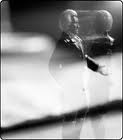
 Tall, Slim & Erect: Portraits of the Presidents
Tall, Slim & Erect: Portraits of the Presidents
by Alex Forman
The strain of sourcing information persists throughout art, though most aggressively in the written word. What may be buried as a plagiarized essay in class might be hailed as incisive cultural commentary at the Walker Art Center. Academic writing has secured itself with footnotes, parenthetical references and exhaustive bibliographies to ensure credibility and historical due diligence. A student earns her Ph.D not only by adhering to strict referential guidelines but through innovative and original research, while a mixed media artist could literally steal a loaf of bread and put it on a pedestal. Once in the gallery that bread becomes a bracing critique of federal subsidies, consumer waste and income-inequality. Though the work itself is nothing much, the ready-made, or this ready-stolen, excites us as a concept. In 1967, Sol LeWitt wrote in Artforum, “the idea becomes the machine that makes the art.” The physical talent, that is, the brushstrokes, the bronze-pouring, even ghostwriting, matters far less in some ways than the sketch, the command, the source of inspiration or the name with top billing.
How then do we evaluate material printed at Kinko’s, or sprayed on a wall? If the source remains anonymous, or unvetted, the production becomes dubious. Confronting these tensions of authority, Alex Forman’s fascinating historical aggregate, Tall, Slim & Erect: Portraits of the Presidents, consists entirely of regurgitated information.
As the story goes, Alex Forman found a collection of plastic, full-body portraits of United States Presidents, Washington through Nixon, from the toy maker Louis Marx. Inspired by the crude likenesses and universal height—each standing 60 millimeters short—Forman began her photographic cum biographical exposition, writing along each pictured figurine a brief, colloquial story.
The book is certainly not hers. Here she is not an author, but a shrewd, skilled researcher. Designed in the image of the Jefferson Bible, a self-selected collection of Biblical stories, psalms and passages from various other Bibles, arranged in a certain order of time and subject, Tall Slim & Erect has no page numbers, no quotations, no citations. Forman has compiled a mass of other researchers’ work: with a nine-page bibliography including books by David McCullough and Gore Vidal, biographies published by Simon & Schuster and autobiographies by the presidents themselves, Foreman is certainly well-read, but she also culls from the annals of editorial columns, Wikipedia articles and snopes.com. The reader never knows the truth from the hearsay. Of course, though, Foreman makes no illusions: “None of the text herein was written by me.”
Such a frank, blanket admission leads me to wonder if in fact Forman wrote nothing for this book. If this text is mere paraphrase, or complete plagiarism, what then is Forman’s role? She has become the friend at the bar, the all-too-knowing gossip at work. Each president’s story begins as though someone could say, Did you hear: Thomas Jefferson almost died from rheumatic constipation, he also had boils on his butt; John Adams once called James Monroe a wretched beggar for leaving the presidency with $75,000 of personal debt; when Tyler got the news of his ascension, he was on his knees, shooting marbles with his children.
Forman fills the pages with trivia, and suspiciously accurate numerical data: Taft suffered from sleep apnea; In 1900, FDR didn’t make it the cut for the Harvard football team, so he became a cheerleader; Eisenhower was a licensed pilot, and lived through 7 heart attacks and fourteen cardiac arrests; Johnson is the only person to have held all the non-judicial positions in the American political system. McKinley once shook 1,900 hands in about 19 minutes—Forman does the math for us, about one shake per second.
How can we take all of this seriously? Forman claims that Warren Harding was “superbly handsome,” and died, in 1923, “because it was the best thing to do.” She references diary entries and personal accounts, but can’t help but include absurd, unsupportable claims:
“Jackson was probably the saddest man who ever entered the White House.”
“Benjamin Harrison “was completely honest.”
“Franklin Pierce was the most unambitious man ever to run for office.”
Shot in the arm by an untalented assassin, Garfield died months later due to medical malpractice that morphed his flesh wound into a “twenty-inch-long contaminated gash, stretching from his ribs to his groin.” How does an arm wound become a lacerated torso?
Page by page, Forman’s voice rings with counterfeit scholarship, achieving a fluctuating, unreliable credibility. Her text is less about presidential facts and more about the precedents of authenticity. Though not clearly cited, Forman dutifully lists her references. Though not customarily professional, she and Les Figues Press have designed a book unlike the regimented Academics, a kind that successfully replicated our own untraceable structures of knowledge. This book reveals the wandering ideas that make the machine of history.
The challenge to evaluate the work of art relies on discerning appropriation from inspiration from derivation from impersonation. If I have an idea for a sculpture, but not the capability, I might request, or even pay for someone to make it for me. Where then can we find the work’s source? Surely the worker physically made it, but I envisioned it. It was an idea I had, an idea wrought subconsciously from the deep and fraught network of my surrounding images and voices. Where do I locate the source of my idea, if even I should? Perhaps the origin matters less than what it inspires.





